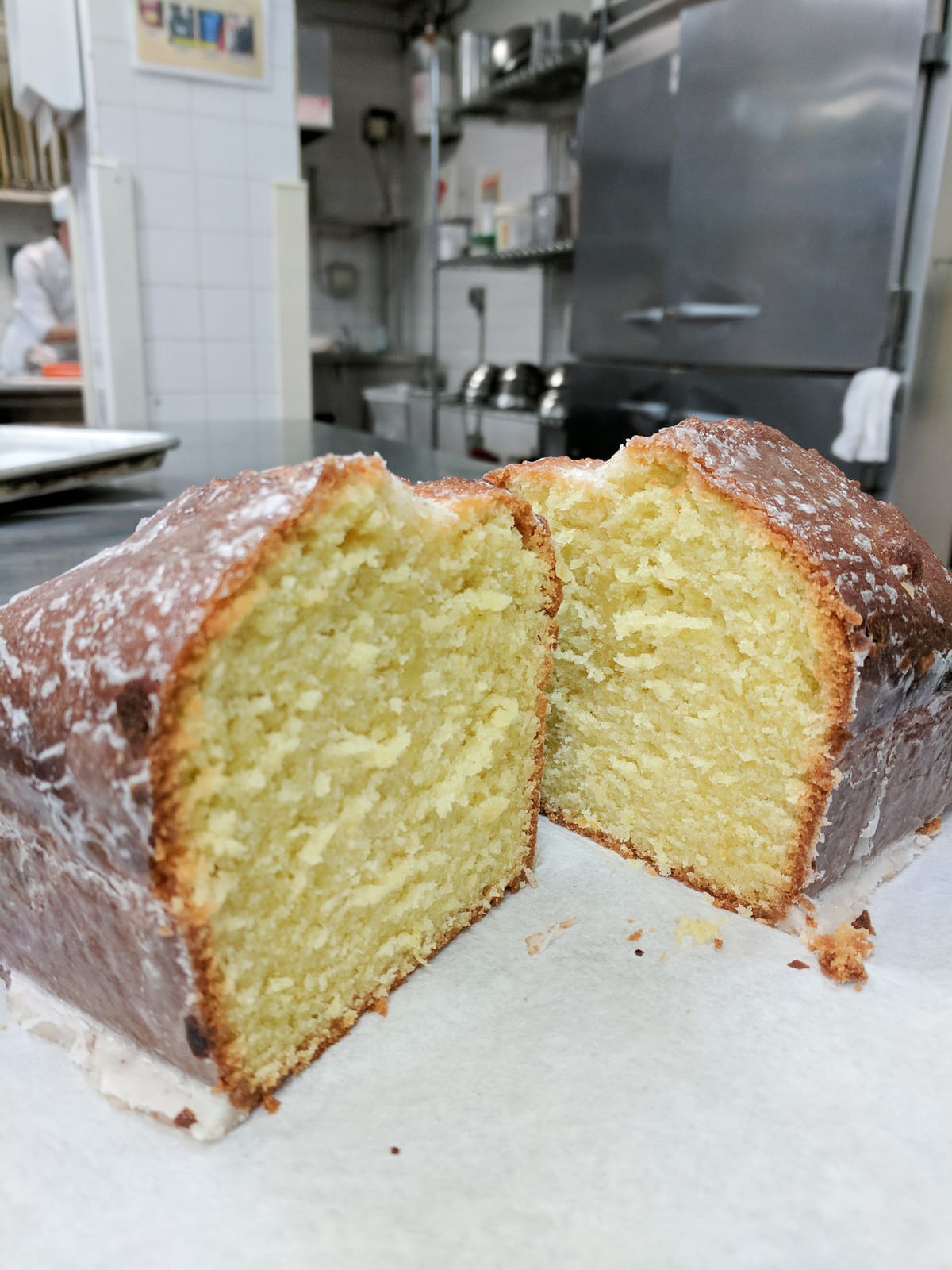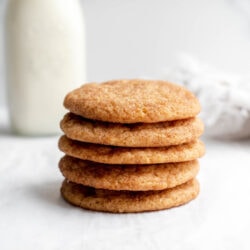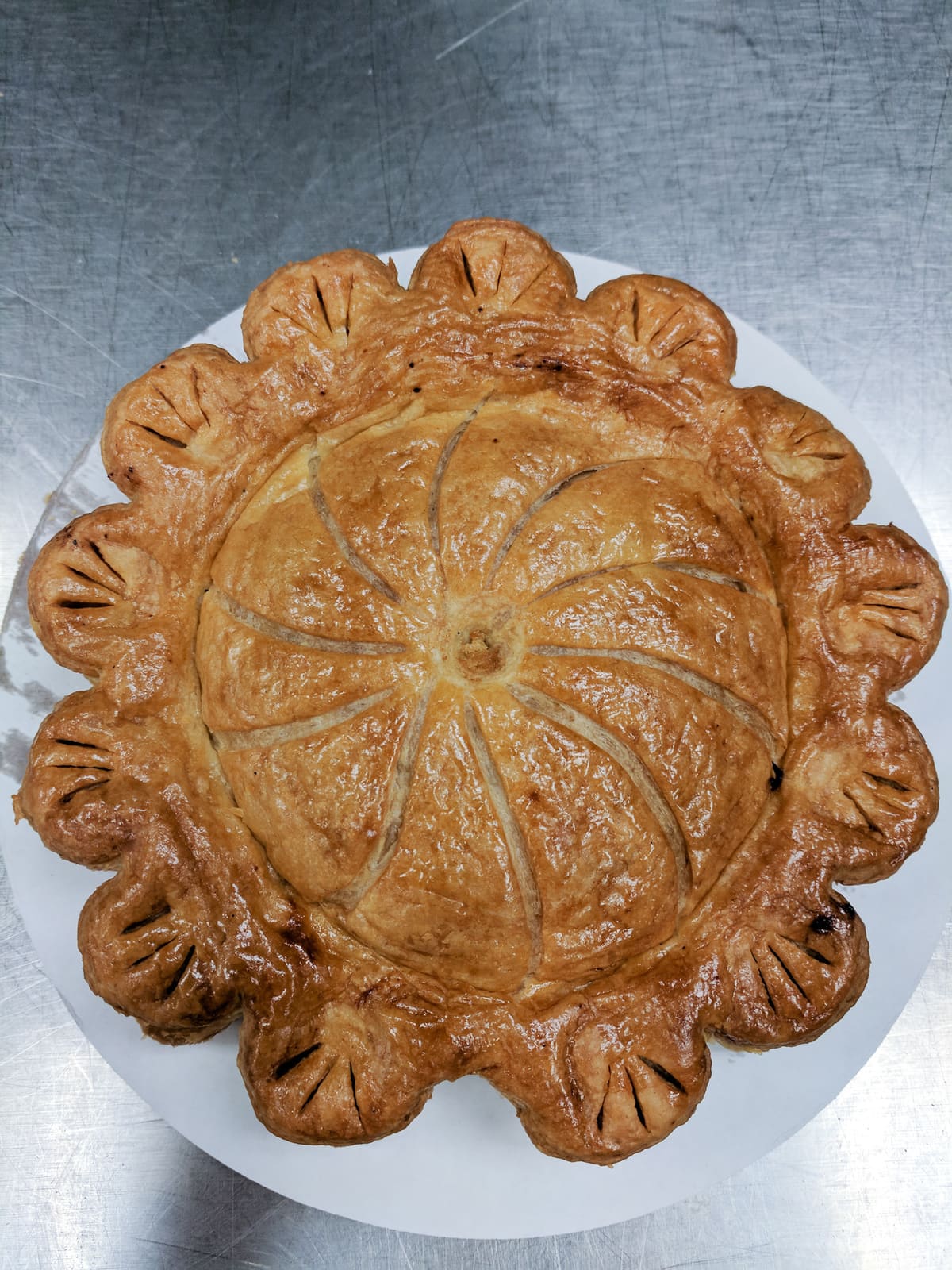Welcome back to another part in my pastry school recap series! I recently graduated from pastry school at The International Culinary Center, and I am sharing all about my experience here. If you missed the first two parts, make sure to check out the links below to get caught up.
Pâte Feuilletée (Puff Pastry)
After we wrapped up the pâte à choux unit, we moved on to tackling pâte feuilletée, or puff pastry. While you might not have made it before, you have definitely eaten puff pastry before. Light and flaky, puff pastry is commonly used for both savory and sweet dishes.
To start out the puff pastry unit, we first learned how to make normal puff pastry. At first glance, the process seems a bit complicated—you first prepare the dough and then incorporate the butter. Then, you have to perform numerous 'turns' to the dough, rolling it out to make sure the butter gets evenly incorporated. By doing this, you create the layers in the dough that cause it to rise once it goes in the oven. In addition, we also learned how to make quick puff pastry and inverse puff pastry, in which the process is a bit quicker.
Some of my favorite items we made during this unit included a gâteau pithivier (a puff pastry cake filled with frangipane), apple turnovers, and a mille-feuille. I have to admit that I scarfed down quite a few of these desserts after getting home from class each week!
Gâteau pithivier

Tarte aux poires en cage (poached pairs wrapped with puff pastry)
However, my absolute favorite item we made the entire unit was a jalousie. While these can be sweet or savory, we made one during class that consisted of a béchamel sauce and mushrooms, and it was to die for. I know this recipe will be one I go back to again and again!

Mushroom jalousie
To wrap up the unit, we had another practical exam. I had to prepare paillettes (puff pastry cheese straws), vol-au-vent, and a jalousie. I personally really enjoyed the puff pastry unit, and I loved the process of making the puff pastry and rolling it out. While it does take a bit of time, the end result is definitely worth it.

Paillettes (puff pastry cheese straws) and vol-au-vent
Cake 1
Before I started at ICC, I was convinced I wanted to go into decorating cakes. I even considered attending ICC's Cake Techniques & Design course instead of the full pastry program (though looking back I'm glad that I didn't). Therefore, it came as a shock that the first real challenging part of pastry school for me was cakes.

Chocolate cupcakes
In the Cake 1 unit, we eased into it, starting with lemon pound cake and cupcakes. Then, we graduated to some more advanced ones, such as a marjolaine and a lemon chiffon cake. With most of the cakes, I started facing similar problems.

Lemon pound cake
When you are making cakes (especially those that use meringue to provide height), you have to make sure that you carefully fold the batter. By doing this, you make sure that you don't overmix and that the cake will rise properly in the oven. From the beginning, I really struggled with the folding technique. Most of the cakes that I made did not rise as much as those of my classmates, and I started feeling really discouraged by it all.
Besides the folding, I also really struggled with crumb coating and masking the cakes. This part comes when you are assembling the cake layers and decorating with buttercream or ganache. With this process, I struggled to keep the layers straight and make the crumb coat look decent. To be honest, it felt like I was falling behind, and this was the first time in class that I really started to dread attending.

Marjolaine
Looking back, I know I was too hard on myself. Nobody expected me to be perfect, and I placed unrealistic expectations on my abilities. The whole point of school is to learn as much as you can and make mistakes. Mistakes and failures offer amazing learning opportunities that would not have presented themselves otherwise.
At the end of the Cake 1 unit, we all made a genoise cake for our practical exam. Though mine didn't rise as much as I had hoped, it turned out semi-decent in the end. I also got to practice my piping skills for the first time by writing 'Happy Birthday' on a marzipan plaque. In the end, we all have to start somewhere. I struggled with cakes, but all that means is I have a lot to learn, and I will continue to surround myself with resources and people who can get me to where I want to be.

Genoise cake with coffee buttercream
Bread and Viennoiserie
Finally, we moved onto the last unit of this level: bread and viennoiserie. Viennoiserie includes yeast-laminated baked goods that have added ingredients such as milk, eggs, or butter (like croissants).
We started off the unit with quick breads, such as muffins and scones. Quick breads use chemical leaveners such as baking soda or baking powder, so they require much less time to prepare. I absolutely loved the scones we made in class, and I have made these at home numerous times since going to ICC!

Lemon poppyseed muffins and blueberry muffins

Scones
After that, we moved onto making bagels, focaccia, and English muffins. Like proper New Yorkers, we made bagel day into an entire extravaganza: after making them, we devoured them with some smoked salmon and cream cheese!

Homemade bagels!
Making bread is definitely an experience, and it involves lots of time kneading the dough and then letting it proof. For breads that involve yeast, you have to let the bread proof (or rise) for sometimes up to a few hours before you can bake it. Personally, I really loved working with bread, and I wish we had spent more time on it at ICC.

Freshly-baked challah bread
Finally, we moved onto viennoiserie, and we made brioche, croissants, danishes, and more. Out of all the desserts, croissants might be my favorite, so I absolutely loved making these. The process does take quite a bit of time, but they were so, so delicious.

Freshly-baked croissants
Like all the other units, we wrapped up with a practical exam. I personally had to make scones, croissants, pain au chocolat, and brioche à tête. For the croissants, I accidentally added too much salt to the dough, which caused them not to rise as much as they should have. I remember feeling super frustrated during this exam because of that, but mistakes happen, right? I have since learned to truly embrace each mistake and use it as a learning experience.

My practical exam: scones, croissants, pain au chocolat, and brioche à tête
And for a good life tip: you will always be able to make friends if you can give them free croissants and danishes!
In the next recap, we are going to dive into the next level of cakes, petit fours, and my midterm exam. We are almost halfway through! I will also be sharing a video soon of this recap, so stay tuned for that. Make sure to check out the other recaps if you missed them!
Pastry School Recap Series
Pastry School Recap #1: Deciding to Go to Pastry School
Pastry School Recap #2: Cookies, Tarts, Pies, and Pȃte à Choux
Pastry School Recap #3: Pâte Feuilletée, Cake 1, Bread, & Viennoiserie
Pastry School Recap #4: Cake 2, Petit Fours, & Midterm Examination
Pastry School Recap #5: Chocolate 1, Individual Desserts 1, & Sugar 1
Pastry School Recap #6: Chocolate 2, Sugar 2, & Cake 3
Pastry School Recap #7: Individual Desserts 2, Restaurant Day, & Final Exam





















Comments
No Comments